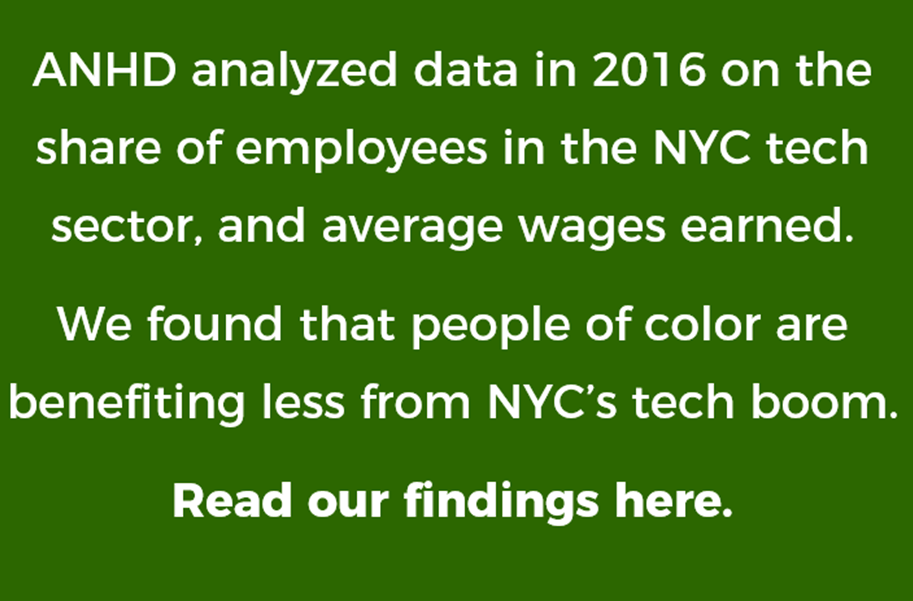ANHD Statement on Amazon HQ2
The Association for Neighborhood and Housing Development opposes the development of Amazon’s newest headquarters (HQ2) in Long Island City.
Public tax dollars intended for the public good are much more effective when they are directly applied toward truly affordable housing, good jobs, schools, and infrastructure than when they are given as an incentive to the private market. It is grossly misguided to use public tax dollars to subsidize the world’s wealthiest corporation while New Yorkers face growing inequity and a crisis of displacement.
While Amazon is set to receive over 1.75 billion dollars in subsidy, it has promised very little to New Yorkers. The creation of a $15 million workforce development center without guaranteed jobs for local residents renders that investment as effective as the City’s pre-existing HireNYC program. The new job creation touted by both the State and by Amazon does not guarantee that those jobs will go to the communities that need them most. As ANHD has demonstrated in our Tale of Two Techs analysis, the tech sector remains deeply inequitable by race and income; even when people of color are employed in the tech sector, wages remain much lower than their white counterparts. And the “concession” to NYCHA residents in the form of job fairs for a mere 3 years is insufficient to say the least.
The City and State have done little to ensure to limit speculation and displacement. The reverberations of HQ2 will be felt not only in surrounding neighborhoods, but will extend citywide throughout low wealth immigrant communities and communities of color. As we’ve seen in Seattle, the Bay Area, and in other cities where unfettered tech development has been allowed to spread, without good jobs specifically set aside for local residents and without strong protections for both tenants and middle income homeowners, displacement is guaranteed. Such protections are not defined in this deal because they do not exist.
The concessions provided by Amazon, specifically the donation of space for “use by artists and industrial businesses”, “a site for a primary or intermediary public school” and “new green spaces”; were all part of an existing development plan. Even if these “concessions” were new, they do not make up for the long-felt impact that a project of this scale and size will have on affordable housing, infrastructure, and income parity not just in Long Island City, or in Queens, but in all of New York City.
The promised job growth and supposed positive impact of Amazon’s expansion to New York don’t outweigh the major infrastructural, housing, and equity challenges it is sure to bring. A deal created to fund one of the largest mega-projects in New York City’s history without any public process, input, or deliberation not only disempowers the very communities that will be most impacted, but entirely erases their agency and their voices. As we have argued in the context of the neighborhood rezonings, New Yorkers should not be put in a position where they have to make concessions to private development in order to meet their community needs. Queens residents, like all New Yorkers, deserve access to good paying jobs, good transit, and truly affordable housing through real, transparent community-led development- without having to trade in their communities and neighborhoods to the world’s largest corporation.